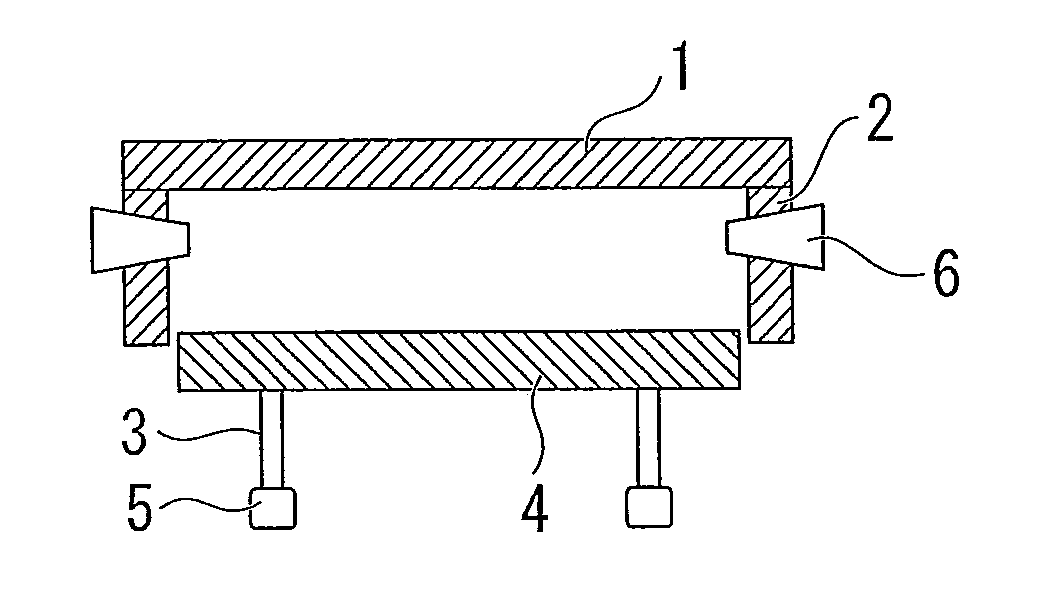Method of producing reduced iron cast, and method of producing pig iron
a technology of reducing iron and pig iron, which is applied in the field producing pig iron, can solve the problems of difficult reoxidation of hbi, high porosity, and easy reoxidation of metal iron, and achieve the effects of reducing iron casts, rarely reoxidizing, and reducing the cost of coke source units in blast furnaces
- Summary
- Abstract
- Description
- Claims
- Application Information
AI Technical Summary
Benefits of technology
Problems solved by technology
Method used
Image
Examples
examples
[0065]Using equipment in which the RHF equipment shown in FIG. 2 and the hot briquette device shown in FIG. 3 are connected to each other, oxidized iron reduction and molding processes were performed with different raw material conditions in accordance with the method according to the invention. The outer diameter of a hearth of the RHF was 24 m. The processing capabilities of the RHF and the hot briquette device were 24 ton / hour and 16 ton / hour, respectively. In addition, the reduced iron cast produced using the above equipments was supplied to a blast furnace of 4800 cubic meters and the operation results thereof were examined. These results are shown in Tables 1 to 3.
[0066]Properties of powders as raw materials are shown in Table 1. A raw material 1 is a by-product such as dust and sludge including oxidized iron recovered from a steel production process. Metal iron and ferrous oxide are included therein. In addition, oxidized metal and the like are largely included therein as imp...
PUM
| Property | Measurement | Unit |
|---|---|---|
| temperature | aaaaa | aaaaa |
| apparent density | aaaaa | aaaaa |
| diameter | aaaaa | aaaaa |
Abstract
Description
Claims
Application Information
 Login to View More
Login to View More - R&D
- Intellectual Property
- Life Sciences
- Materials
- Tech Scout
- Unparalleled Data Quality
- Higher Quality Content
- 60% Fewer Hallucinations
Browse by: Latest US Patents, China's latest patents, Technical Efficacy Thesaurus, Application Domain, Technology Topic, Popular Technical Reports.
© 2025 PatSnap. All rights reserved.Legal|Privacy policy|Modern Slavery Act Transparency Statement|Sitemap|About US| Contact US: help@patsnap.com


